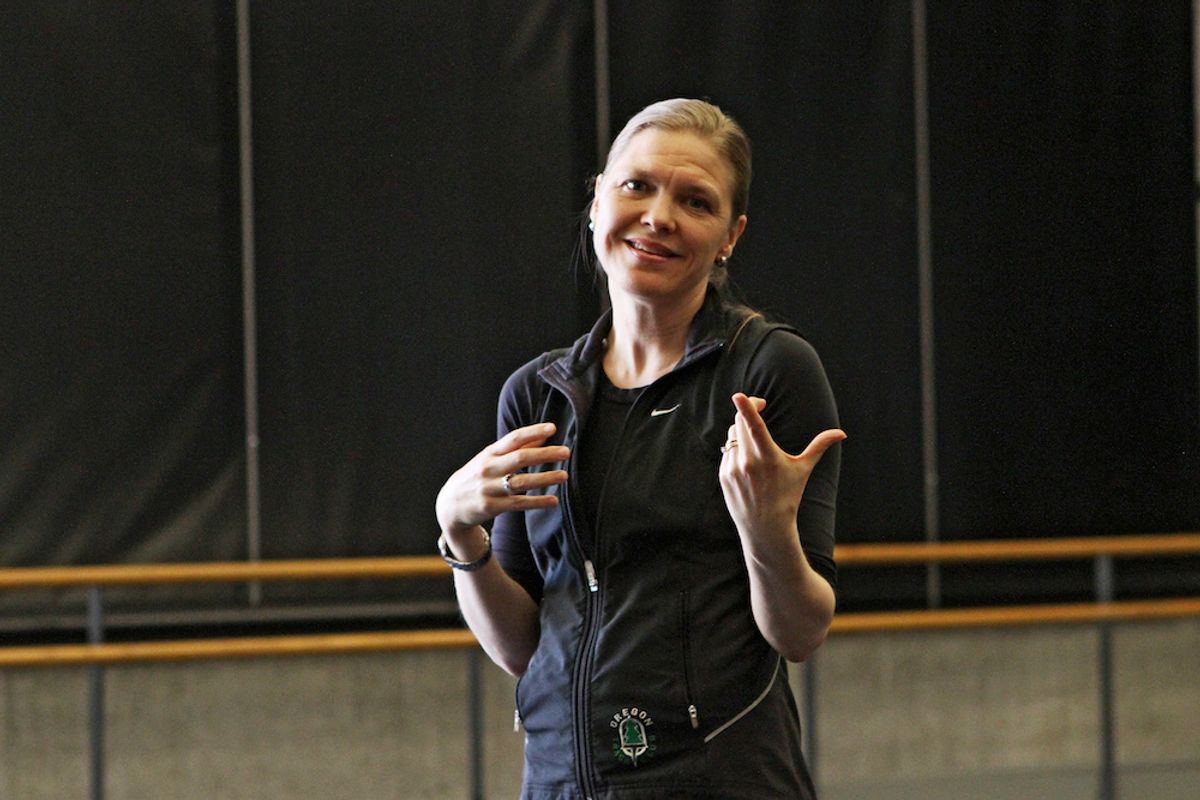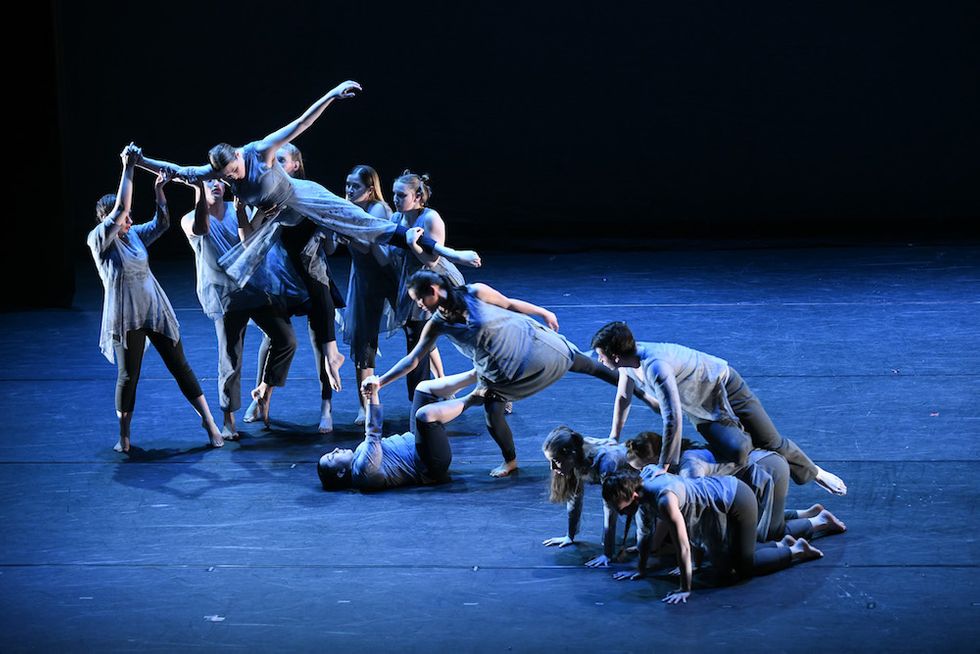
Guest artist residencies let college dancers explore new movement styles and interact with working professionals. But the students aren’t the only ones who benefit from the experience. Visiting a university to teach and set work gives choreographers a unique chance to connect with the next generation of performers and creators. To get more insight into the perks—and challenges—a residency can offer, DT spoke to New York City–based choreographer Tiffany Mills about her time as Baker Artist-in-Residence at Muhlenberg College, in Allentown, Pennsylvania.
Nuts and Bolts
Mills, who launched Tiffany Mills Company in 2000, has an extensive CV when it comes to college dance experience: alumna of the University of Oregon honors college (BA) and Ohio State University (MFA), with guest artist residencies at Temple University, Boston University, Kenyon College, Goucher College and Reed College, among other schools. “Residencies feed me in so many ways,” she says. “I always come back feeling energized.”
And Muhlenberg is almost a second home—she previously guest-taught there, from 2004 to 2006, and has returned a handful of times for lecture-demonstrations and workshops.
In October 2017, Mills’ Baker residency featured an informal performance by her company and a Q&A that let students learn more about her work. Then, Mills spent three days teaching technique, partnering, composition and pedagogy. (The Baker grant also took the company to nearby DeSales University and the Lehigh Valley Charter High School for the Performing Arts.) At Muhlenberg, the company was given time and studio space to work on a new piece, and students were invited to watch and give feedback. And finally, in four jam-packed rehearsal days, Mills restaged with the students her piece It Only Happens Once…Yesterday and Tomorrow.

Muhlenberg students perform Mills’ “It Only Happens Once…Yesterday and Tomorrow.” Photo by Matthew Wright, Fig Tree Photography, courtesy of Tiffany Mills Company
If it sounds like a whirlwind week, it was. But for Mills, the condensed time frame of a typical residency is part of the draw. “With my company, we might take a year or two to create a work,” she explains. “At a college, we often have seven days or less. It’s refreshing to see how quickly we can put something meaningful together.”
Creative Process
“One current that runs through much of my work is human relationships—how we communicate with each other, or don’t,” Mills says. “I’m interested in the differences between people, so I always try to bring out the uniqueness within each dancer.” She accomplishes this by having dancers generate their own material. She’ll often assign a task or share an image to get the ball rolling. “Then,” she says, “I’ll edit their phrases, or I’ll pick out interesting parts and have them explore those further.”
The work she chose for Muhlenberg is one she’s set several times before, including at Boston University and Temple University, at Seattle’s Velocity Dance Center, and on the contemporary company 10 Hairy Legs. She’s done the piece with all-female, all-male and mixed-gender casts, and with anywhere from 5 to 12 performers. “It Only Happens Once…Yesterday and Tomorrow is very versatile,” Mills says. “It has some constants: It’s always in three sections, it always starts with the same image, and there are a few landmarks along the way. But how it develops is unique to each version and each cast. We build the piece collaboratively.”
Challenges
Mills was pleased to find that her Muhlenberg group seemed ready to handle everything she threw their way. “This cast was hungry,” she says. “They arrived warmed up and ready. They took direction and ran with it. Unfortunately, that’s not always the case.” They were even able to spend the fourth rehearsal day cleaning and video taping, which meant Mills was able to head home confident in what they’d made together.
Still, leaving is one of the hardest parts of any residency. After her week at Muhlenberg, Mills wasn’t able to return to check in with her cast, although she did Skype into a few rehearsals. “It’s hard, as the creator, not to be there all the way to the end,” she says. “I have to let the piece live on its own.” Also, due to scheduling conflicts, she wasn’t able to attend the performance. “One dancer got ill at dress rehearsal,” she says, “so the cast downsized. Then, on opening night, the girl felt better and came back. The dancers had to deal with that curveball without me.”
Perks
“My company is small—six dancers—and we know each other very well,” Mills says. “When I do a residency, I’m getting fresh perspectives.” She often comes home with new tools and imagery to bring to company rehearsals, as well as to her classes going forward. “I might have found a better way of teaching a certain partnering move, or I’ll have had a spark of an idea that will eventually lead to a new piece,” she explains. The push to work quickly also sometimes has lingering effects: “I’ll walk into company rehearsals and say, ‘Today, we’re not going to talk so much. We’re going to be efficient.'”
Aside from the impact residencies can have on her own artistic endeavors, Mills enjoys the sense of satisfaction that comes from watching dancers blossom. “College students are young and eager,” she says. “They’re curious. They’re sponges. In only a week, you can see them grow.”



